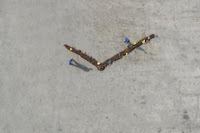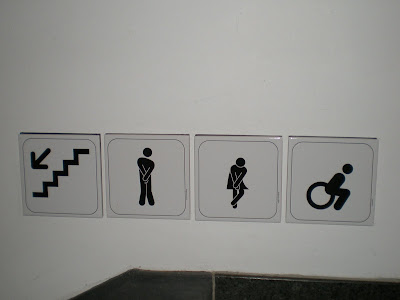Among our many tutors in London, we had a way too short session with
Dr Kit Barton about Inspirational Ideas and Thinking. The class usually takes 45 hours, we got 3. Well, just enough to know what to look for in my next readings!
We discussed 4 methods used to get inspired, or as we like to say, to be creative. Here is an overview and some links to know more about each of them.
1. Psychoanalytic Exploration
Thinkers:
Freud and
Jung
Concept: Creativity lies within you,
in the unconscious. This is the part of the mind that we are not aware of, where all instincts and drives reside. So, how can we access the unconscious? Sometimes it manifests itself through
Freudian slips. We use a lot of ideas repressed in the unconscious when we tell
jokes. Or, if you can remember them, the best way to access the unconscious is dreams.
The principle that creativity lies in the unconscious becomes even more interesting from Jung’s point of view: the
collective unconscious. Ah, what a treasure for storytellers! Think of all myths and legends, which address the same issues all over the world. Then we understand how come
Star Wars was such a success…
2. Symbolic Systems
Thinker:
Ferdinand de Saussure
Concept: From a semiotic point of view, every name is a sign. Concept and sound-image are closely related; they are
the signified and the signifier. Considering that the relation between the signifier and the signified is arbitrary, there is an opening for creativity here.
Simply use different signifier(s) for a signified. You can get something new that people will understand if there is an alteration of some elements that makes the concept. This approach is particularly used in design.
Now, how can we alter signifiers enough, but not too much, and therefore become more creative? Sources of inspiration often come from outside your culture of from the micro-cultures you can find in your own.
3. Hermeneutic Analysis
Thinker:
Martin Heidegger
Concept: This approach discusses of the interpretation of things. Heidegger developed a quite complex theory, but here is a rude shrink-down of the principles exposed in
The Origin of the Work of Art.
We can consider than there are three levels to interpret things.
- As an aggregate of qualities under a single term. To interpret a door, you say “door”.
- As a description of its natural qualities (a “scientific” approach). The door becomes “a large and thin piece of wood with a handle”, etc.
- As “equipment”, i.e. the thing being interpreted by its purposes. The door then is a mean to go through a wall, or a way to cut us from the activity on the other side of the door, therefore intimacy, and so on.
The creativity would use the third level, or simply the opposite of level 1:
let things speak for themselves. Instead of saying door, let the door say something to you. Allow yourself to be spoken to by objects.
Note: The noun hermeneutic comes from
Hermes, the messenger of gods, who interpreted messages.
4. Radical Synthesis
Thinker:
Nietzsche
Concept: Last but not least, the simplest way to try to be creative (I say try, because it is not a infallible technique). Radical Synthesis can be simplified into the idea of
doing the opposite.
Identify what the rules are. Then willingly break them.
According to Nietzsche (
Thus Spoke Zarathustra), there is the herd and the others (we can call them creatives). The herd edicts rules to keep you in the
herd, mainly using guilt. Being alone or different is guilty.
Then, the others are as a matter of fact lonely and not understood. They choose that state, they are adepts of non-conformism. So, being creative is an ongoing act of will. (I got to admit I agree!)
There is also the
Dionysian aspect – where you have to get rid of your inhibitions, commonly with the help of alcohol and drugs. But, not surprisingly at all, the professor did not develop that idea. Shall we discuss that over a drink?










